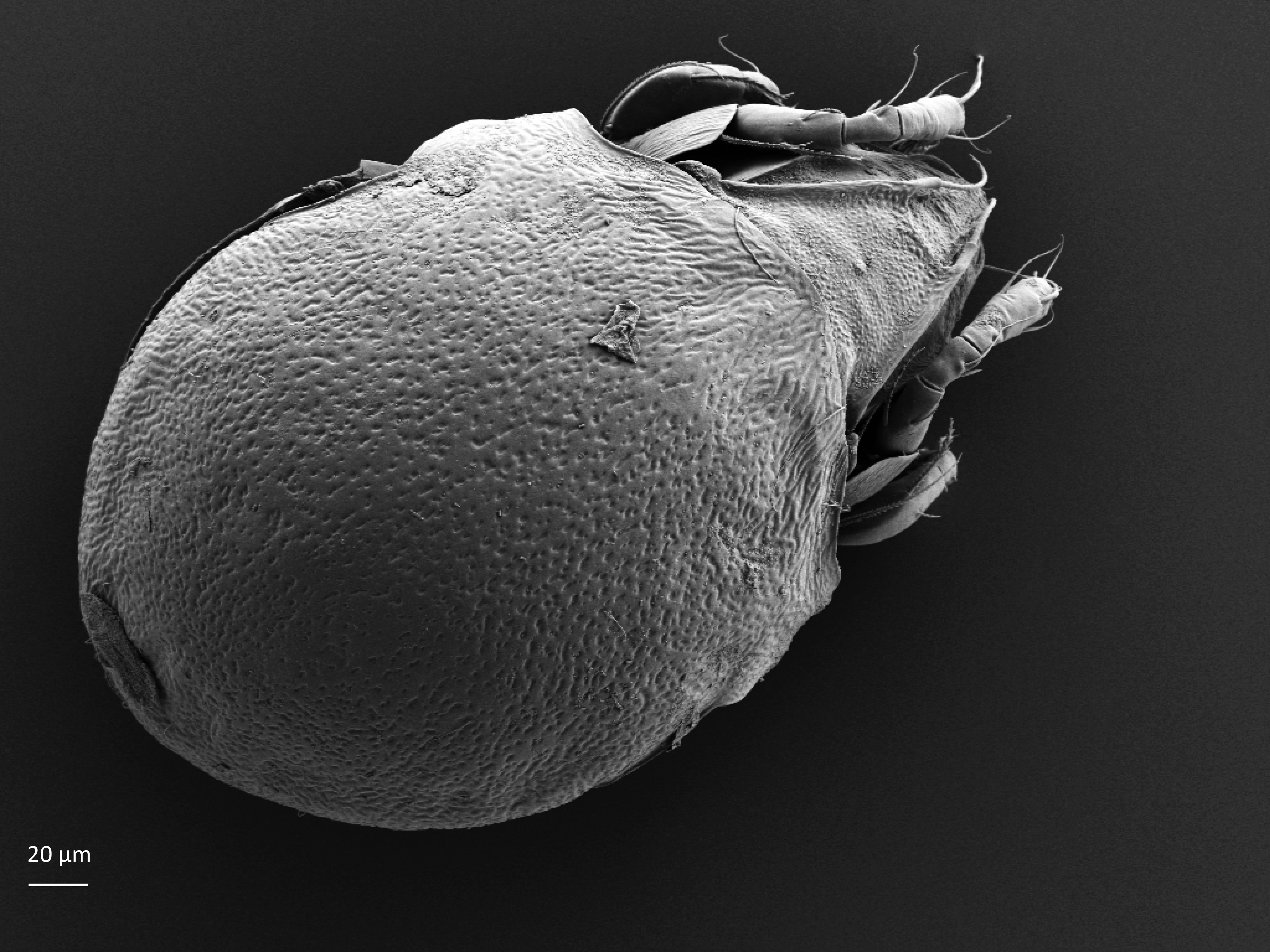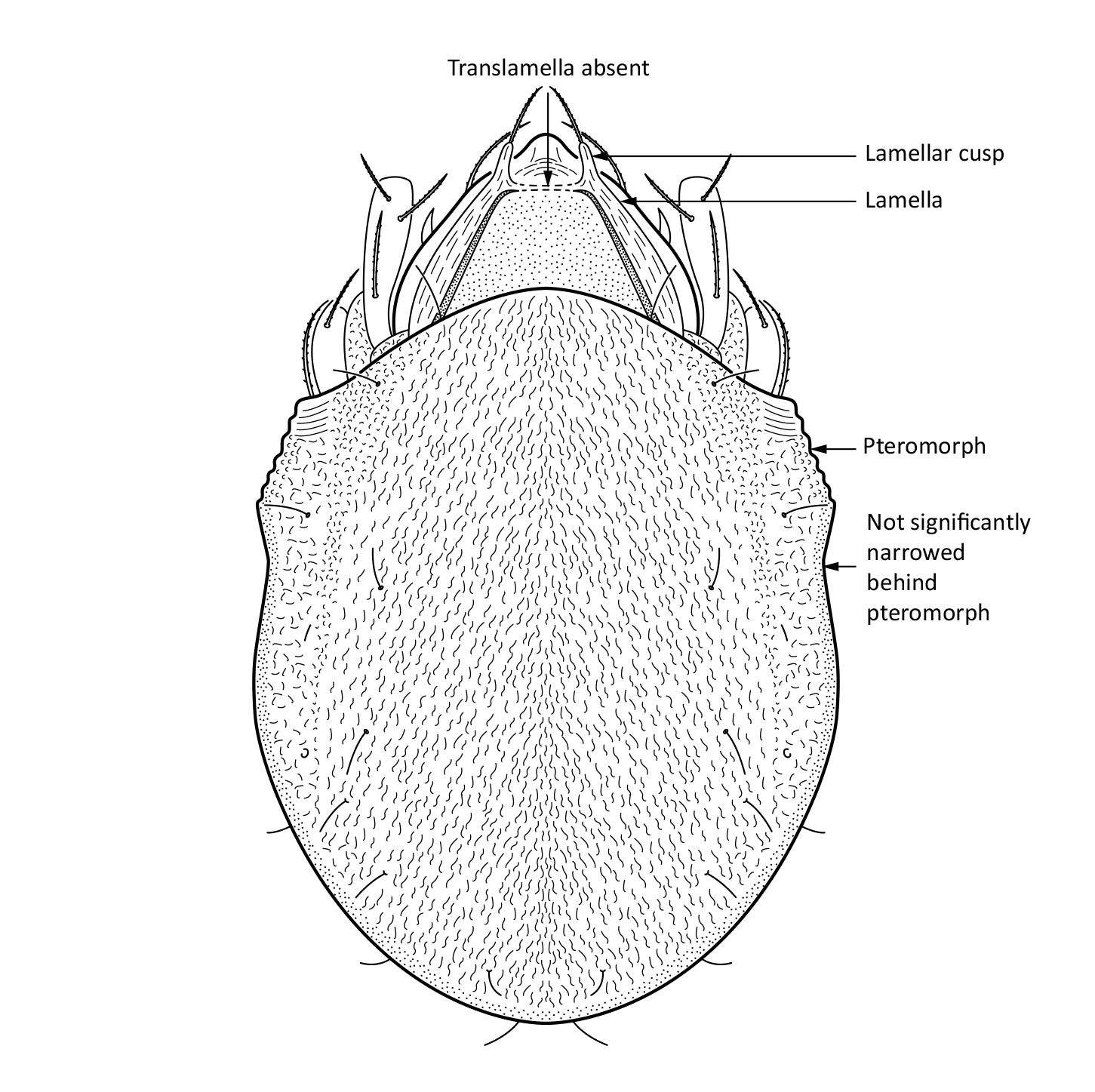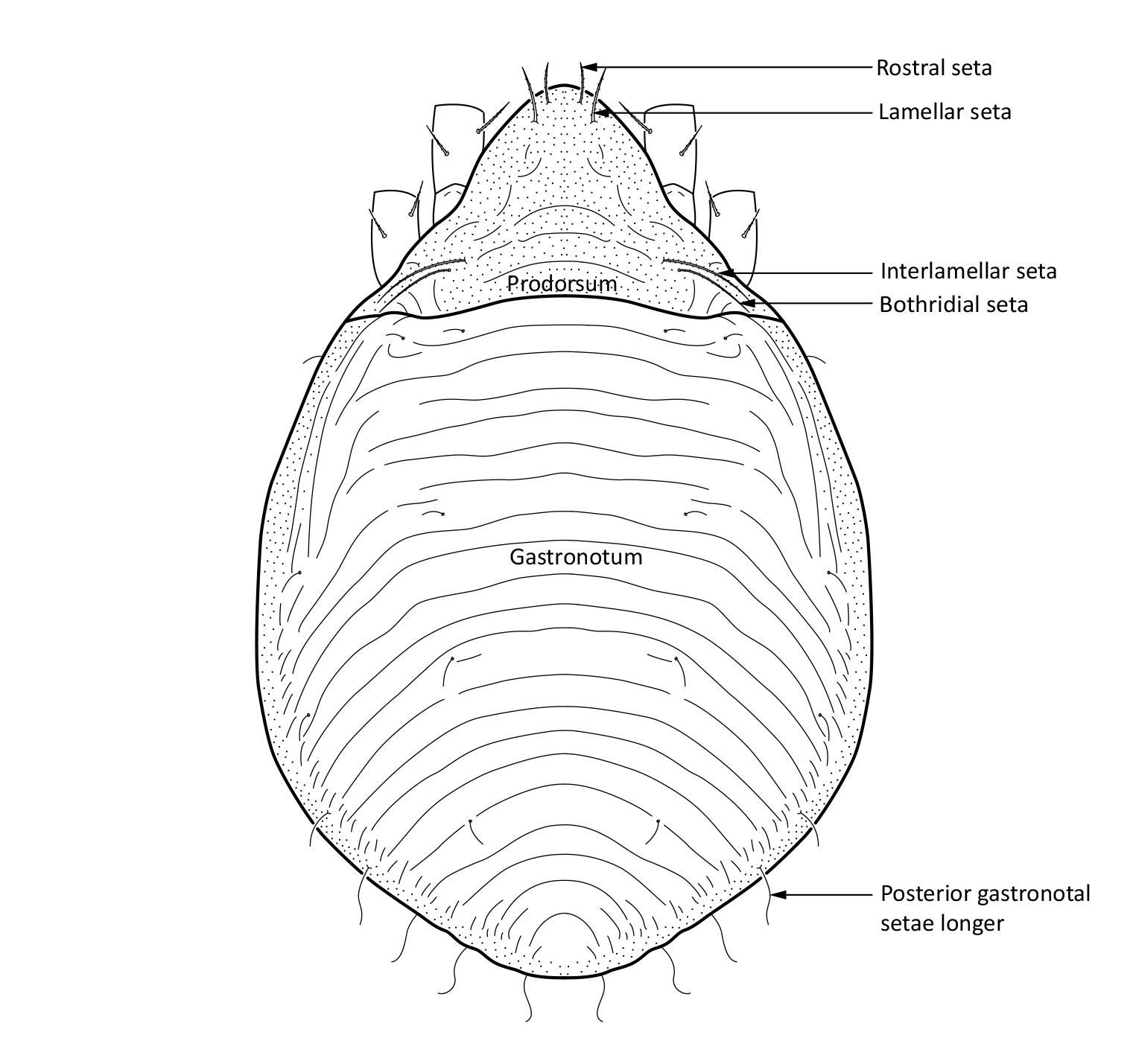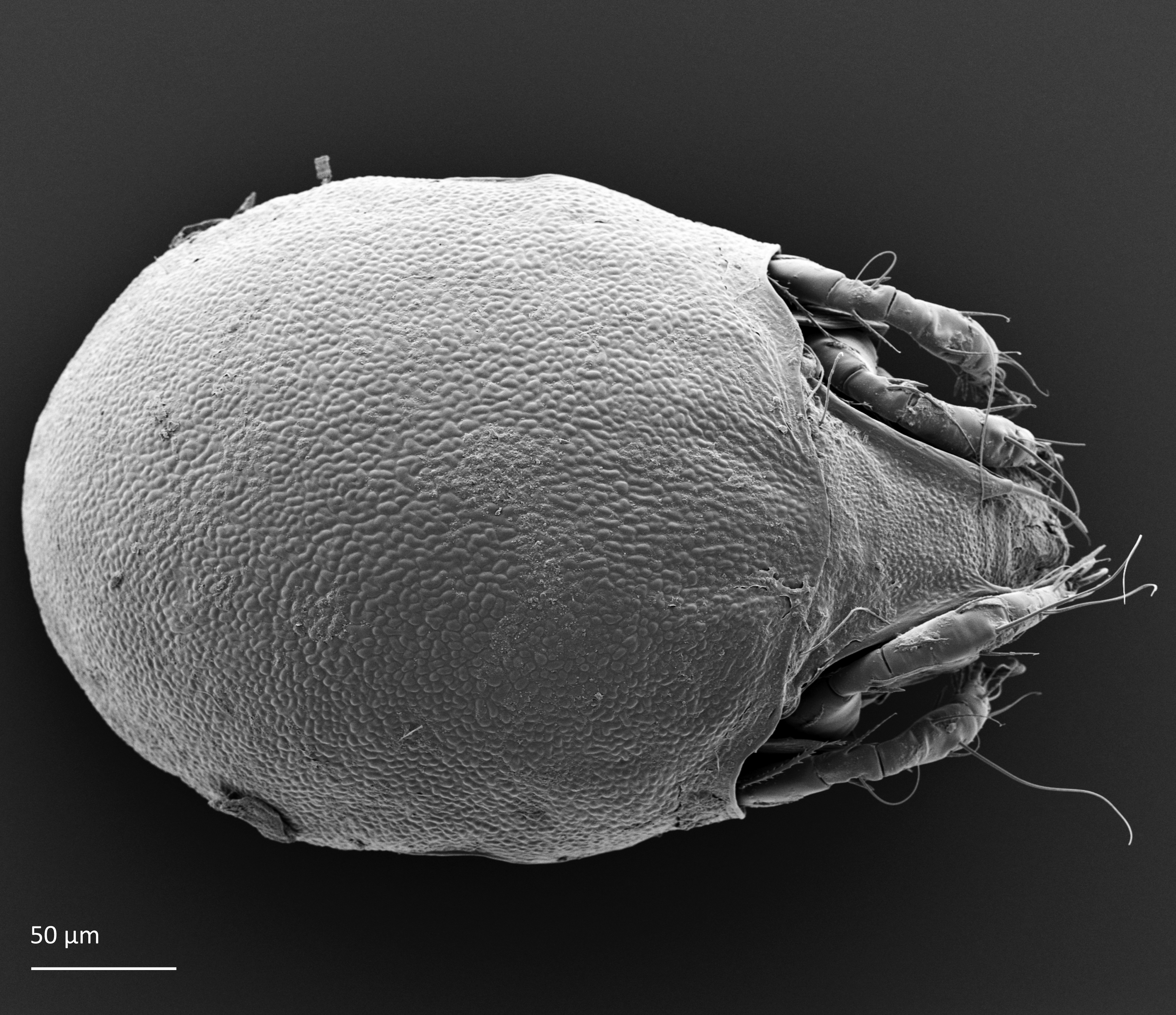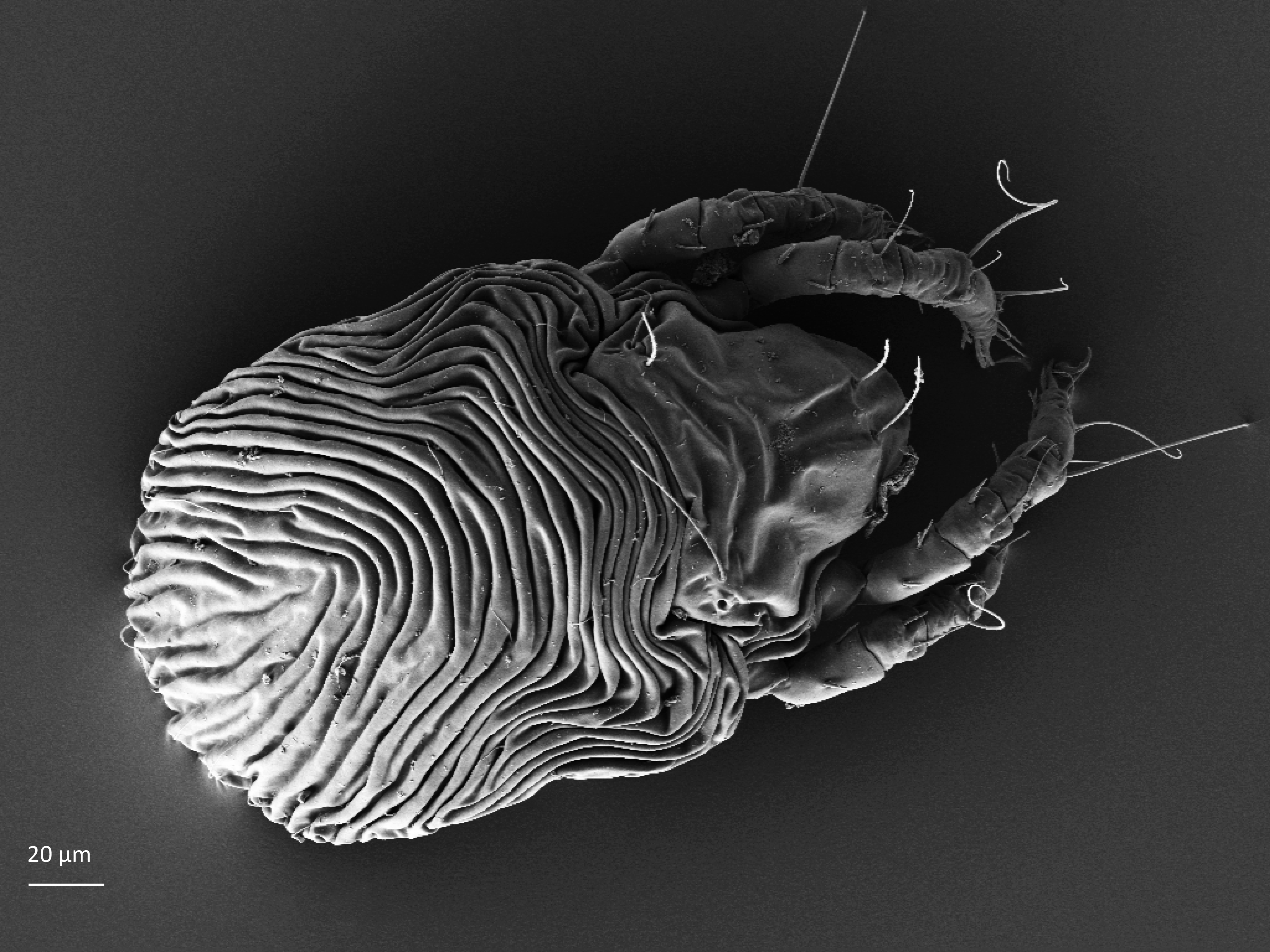Limnozetes solhoyorum
Limnozetes solhoyorum is known only from Norway. It was found abundantly in a small peatland pool in Vestland, in submerged Warnstorfia fluitans moss.
- Innhold
- Description
- Look-alikes
- Ecology
Description
Adult: The length of the body is on average 353 µm and the width is 240 µm. The body is stocky and dark brown. The notogaster is convex and has elongated and rounded foveae (see the Scanning Electron Microscopy image). The notogaster setae (10 pairs) are short and thin (Fig. 1). The pteromorphs are wider than long and the body behind the pteromorphs is not significantly narrowed. The prodorsum has a pair of narrow lamellae with well-developed cusp, but the translamella is absent. The bothridial seta is short and setiform.
Juvenile stages: Larva: body length 185 µm, width 110 µm. Protonymph: body length 228 µm, width 149 µm. Deutonymph: body length 281 µm, width 182 µm. Tritonymph: body length 347 µm, width 244 µm. The color is yellow brown. Juveniles have plicate cuticle (Fig. 2). The prodorsal setae, that is the lamellar, interlamellar, and bothridial setae, are rather long, while the rostral seta is distinctly shorter. The setae on the gastronotum are short and smooth, except for slightly longer posterior setae.
Fig. 1. Dorsal view of Limnozetes solhoyorum, adult.
Fig. 2. Dorsal view of Limnozetes solhoyorum, juvenile (tritonymph).
Look-alikes
Limnozetes solhoyorum is similar to Limnozetes rugosus (Sellnick, 1923), but the adults differ by the sculpture of the notogaster. In Limnozetes solhoyorum the notogaster has elongated and rounded foveae while in Limnozetes rugosus it is covered with rounded microtubercles. The prodorsum of the adult Limnozetes solhoyorum has a well-developed lamellar cusp while in Limnozetes rugosus the lamellar cusp is short. In Limnozetes solhoyorum the translamella is absent, while in Limnozetes rugosus the translamella is incomplete. Juveniles of Limnozetes solhoyorum have long posterior setae on the gastronotum, while in Limnozetes rugosus the posterior setae on the gastronotum are short.
Fig. 3. Dorsal view of Limnozetes schatzi, juvenile (tritonymph).
Ecology
Distribution
The species is known only from Norway, from one peatland near lake Langvotnevatnet (Kvam, Vestland).
Habitat
The species lives in a small peatland pool in submerged Warnstorfia fluitans moss, in a poor bog carpet. In this pool, nearly 6 thousand specimens of Limnozetes solhoyorum were collected from 2 dm3 of moss. It constituted over 80% of all Oribatida mites present in the sample collected and was accompanied by five other oribatid species (Seniczak and Seniczak 2020). All developmental stages, that is larvae, protonymphs, deutonymphs, tritonymphs and adults of this species were found in the pond. Only females were found.
Findings in Norway
The species has so far (2023) only been found in one mire in Vestland.
References
Seniczak A and Seniczak S (2020). Morphological ontogeny of Limnozetes solhoyorum sp. nov. (Acari: Oribatida: Limnozetidae) from Norway, with comments on Limnozetes Hull. Systematic and Applied Acarology 25(2), 327–348. https://doi.org/10.11158/saa.24.12.2
